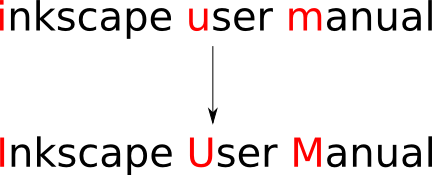

With clipping, you can crop in Inkscape by using regular shapes, objects such as text, or paths. It’s like using a cookie cutter to create a cookie from dough. Just remember that you have a choice there.The clip operation in Inkscape lets you place a vector shape, object or path on top of an image in order to “clip” or cut a portion of that image according to the shape used. Unfortunately it doesn’t look like Cairo is going to add some control over aliasing (don’t you just miss the precision control from Xara?), so when you are exporting to PNG for publishing on the web, it’s up to you to decide what you sacrifice. Moreover, if you look at the output from the first example, you will see that Cairo is trying to be too smart and antialias what’s already aligned to pixel grid. Whereas Cairo will lose SVG filters while maintaining clips and masks: if you take this purely synthetic sample with two objects that have gaussian blur and two objects, one of which is a clipping mask for the other… However, as many things in life it comes with a trade-off as Cairo based exporting doesn’t support some features. The second version looks a bit easier on eyes, but YMMV. It’s available in Save As…/Save Copy As… dialog (the whole page is saved). Since few years Inkscape has a Cairo based PNG exporter which makes the text looks less jaggy thanks to LCD filtering in Cairo.

To start with, you probably only ever need hinted text at 100% zoom level, and then there’s a question of exporting where scaling content to a certain custom destination dpi is not so uncommon.īut there is a way to save some embarassment. I’ve just seen it in Mairin’s blog and couldn’t resist… The problem is that Inkscape doesn’t do any hinting for text, while the application is rather popular for web design and all sorts of screen graphics where crisp is good, and pixel grid alignment is king.Īdding hinting is certainly doable, but involves quite a bit of work to get it right. Presumably most Inkscape users rely on the default PNG exporting method only.


 0 kommentar(er)
0 kommentar(er)
